Restoring Personhood
"Participation in the arts is a guarantor of other human rights because the first thing that is taken away from vulnerable, unpopular, or minority groups is the right to self-expression," Francois Matarasso says in "Acting Together, Volume II." "Participation in the arts is a guarantor of other human rights because the first thing that is taken away from vulnerable, unpopular, or minority groups is the right to self-expression," Francois Matarasso says in the book "Acting Together, Volume II."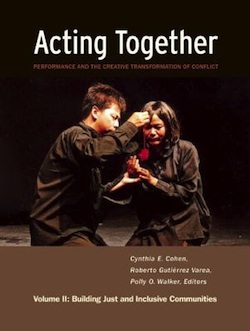
“Acting Together: Performance and the Creative Transformation of Conflict Vol. II: Building Just and Inclusive Communities” A book edited by Cynthia E. Cohen, Roberto Gutiérrez Varea and Polly O. Walker
In 1996 Back Bone Youth Arts devised a performance, “Sk8 Grrl Space,” to be shown only once in a male-dominated skateboarding park in Australia. Thirteen young women played scenes that addressed women’s limited access to public space. One audience member became so riled he shattered a bottle on the steep-sided skate bowl where the women performed. The smashed bottle didn’t shut the performance down, but instead was incorporated into the action.
In Volume II of “Acting Together,” editors Cynthia E. Cohen, Roberto Gutiérrez Varea and Polly O. Walker present vigorous case studies on the use of performance to create just and inclusive communities. “In situations characterized by structural violence, exclusion, and social injustice, building peace involves more than ending violent conflict,” they write. In the aftermath of violence, structures to pursue justice and negotiate differences must be put in place. Silenced voices must be heard.
In his foreword, Salomón Lerner Febres writes, “… the violent act involves robbing the individual of the possibility of occupying a dignified space in the world of our lives, that is, of depriving her or him of their condition of person. This is why those who suffer any form of violence, experience an attack on their identity. … The great power of representation lies precisely in its symbolic force, in its ability to restore, through re-enactment, the meaning inherent in the traumatic act.”
Acting Together: Performance and the Creative Transformation of Conflict Vol. II: Building Just and Inclusive Communities
Edited by Cynthia E. Cohen, Roberto Gutiérrez Varea and Polly O. Walker
New Village Press, 320 pages
Francois Matarasso writes, “Participation in the arts is a guarantor of other human rights because the first thing that is taken away from vulnerable, unpopular, or minority groups is the right to self-expression.” Reading the powerful studies in “Acting Together,” you witness survivors of injustice reclaim their right to self-expression, and in so doing, awaken others.
In these stories, theater makers, community leaders, actors, activists, scholars and others recount how they dealt with issues of pressing urgency to their communities such as economic or social inequality, gender-based violence, poverty and displacement of refugees. From storytelling to skateboarding, from hip-hop to Playback Theatre, the case studies highlight an astonishing diversity of performance modes. They document aesthetic surprises and how transformation occurs.
How does transformation begin? How does it spread through a community to permeate the world at large? These are crucial questions in peace building that “Acting Together” addresses theoretically, aesthetically and practically.
Four themes recur in the five case studies: memory, identity, justice and resistance. In the opening chapter Dr. Eugene van Erven and Kate Gardner credit community theater with creating a safe space to reach across cultural divides. Van Erven relates how working-class Dutch men and immigrant men of Muslim backgrounds in the Laakkwartier neighborhood of The Hague developed rare intimacy and trust in a devised project called “In the Name of the Fathers.” “The performances demonstrably succeeded in breaking down stereotypical notions of Muslim, Caribbean, and working-class men and caused a shift in public thinking, including among progressive women, about how men also need to be included in emancipation processes,” they write. Gardner describes the grass-roots collaboration “BrooKenya!,” in which citizens of the U.S.; Kisumu, Kenya; and Lima, Peru, crafted a latter-day Dickensian soap opera with digital technology about issues such as HIV-AIDS and gender inequality. “Indeed, ‘BrooKenya!’ scenes overflow with the drama of polygamy, racism, homophobia, sexual abuse, teen pregnancy, terrorism, you name it,” Gardner writes. “Our purpose was to help people to get to know each other, to see each other’s different experiences and our shared humanity.”
|
To see long excerpts from “Acting Together” at Google Books, click here. |
In “Youth Leading Youth,” Daniel Banks depicts the transformative power of hip-hop and Hiplife Theatre in Ghana and South Africa. Banks spent four months in Ghana in 2006 with students and alumni from the Tisch School of the Arts at NYU. Banks conjures a kinetic image of the hip-hop cipher, a competitive, empowering circle where young people improvise song and refrain, forge identity and experience the power of community.
In “Change the World As We Know It: Peace, Youth, and Performance in Australia,” Mary Ann Hunter champions young people of diverse ethnicities speaking for themselves through their own aesthetic. Hunter advocates a “transformative practice,” which she defines as one that does not seek to resolve conflict but rather to restructure it, such as “Sk8 Grrl Space,” the performance project in the skateboarding park mentioned above. Contact Inc.’s “The Hope Tour” drew performers “from backgrounds including Aboriginal and Torres Strait Islander, Afghan, Sudanese, Samoan, Congolese, Iranian, Burundi, Thai, Cook Islander, Rwandan and Fijian,” Hunter writes. “Set in a world inhabited by three fictional tribes ‘The Hope Tour’ mixed ‘beats, old school moves, rhyme, and multimedia, with traditional cultural expression’ to convey a loose narrative whereby the tribes explore ways to peaceably coexist while respecting each other’s differences.” Jo Salas explains the theater form that she co-founded in “Stories in the Moment: Playback Theatre for Building Community and Justice.” True stories are told by ordinary people and then immediately acted out. Young victims of bullying in the United States, as well as war widows in Afghanistan, have used Playback Theatre to express painful, oppressive stories. “In Playback Theatre performances,” Salas writes, “children are invited to speak about an experience as a victim, a witness, or a bully, then watch as their feeling or story is enacted on the spot either by a team of professional adult actors — or, using a participant performance model, by student actors and adults together.” Hjalmar-Jorge Joffre-Eichhorn, who helmed the widows’ project in Kabul, writes, “Theatre as a memory-creating process can invite people to transform traumatic personal memory into collective historical memory and consequently help society to move on.” An audience member in Kabul, in response to the widows’ performance, was moved to share: “I was forced to marry when I was twelve years old. During the civil war my husband disappeared and I was left alone with four children, two girls and two boys. I worked very hard for all of us to survive but one day, because of the cold weather, one of my sons died. Shortly after, both my daughters married when they were around eleven years old. Now I am basically alone and do not have enough money to put food on the table.”
John O’Neal, writer/director/activist and founder of Junebug Productions, takes on injustice in the United States in “Do You Smell Something Stinky?” “Racism stinks,” he writes. “It arose in human history as a justification for unethical, immoral behavior.” O’Neal declares in salty prose how hard it is for any of us to get past the roadblock of racism. O’Neal devised the story circle practice during the civil rights movement and teaches it today. Members tell and listen to one another’s stories in a democratically agreed upon process “where the object isn’t to win, but to share.” This collaboration inspires confidence and hope; the storytelling helps dismantle “internalized oppression” that allows exploitation to thrive. O’Neal writes, “So the questions on my mind now are: How to build a movement that, with its energy, with its spirit, with its intelligence, can help roll the big wheel of History away from inequity and toward equity; away from injustice and toward justice; away from bureaucratic autocracy and toward a genuine representative democracy.”
In Section II, Cohen, Varea and Walker make a cogent case for how stories and rituals enter the performance space in ways not possible through more traditional dialogue and negotiation. Performance allows unconscious material to arise and be expressed. Everyday ritual, clothing and other ongoing elements of community life become part of the performance. Bodies retain memories; creative play with the body can yield up those memories for transformation.
Acting Together: Performance and the Creative Transformation of Conflict Vol. II: Building Just and Inclusive Communities
Edited by Cynthia E. Cohen, Roberto Gutiérrez Varea and Polly O. Walker
New Village Press, 320 pages
Artists and practitioners dedicate themselves to “cultivating spaces for creative acts, taking risks in the direction of vulnerability and relationship, acknowledging interdependence, and embracing paradox and complexity.” This leads to three powerful effects: silenced thoughts, feelings and actions are aired; hindered social, ethical and creative capacities are restored; and the moral imagination is embodied in acts of memory, resistance, the pursuit of justice, and a sense of identity and interdependence. Transforming conflict is fraught and tenuous. Yet when people attend a powerful performance, they may be moved to empathize and inspired to take action in ways they otherwise are not.
In the closing chapters, the editors extend an invitation to the reader to take action. Section III provides specific guidelines to help facilitate conversations, create initiatives and support training workshops. Chapter 8 includes nuanced questions for discussion, such as “What are the risks of engaging with resistance as an end in itself?” and “Why are people more able to confront painful memories through performance than through other means?” O’Neal supplies a protocol for story circles. He shares his grandfather’s advice: “Better to have a few easy rules that you can follow than to have a bunch of hard rules that you get lost in.” Then O’Neal adds his own: “Well, maybe there is one law, the law of listening. In storytelling, listening is always more important than talking.”
Cohen and Walker pose questions to elicit strategic thinking for those wishing to design and document performance initiatives, with a special section dedicated to “Minimizing Risks of Doing Harm.” They make a passionate plea for peace and an inspired bid for the art of performance as one of our most humanizing activities. What might happen if more of us acted together?
Your support matters…Independent journalism is under threat and overshadowed by heavily funded mainstream media.
You can help level the playing field. Become a member.
Your tax-deductible contribution keeps us digging beneath the headlines to give you thought-provoking, investigative reporting and analysis that unearths what's really happening- without compromise.
Give today to support our courageous, independent journalists.
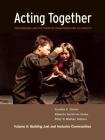

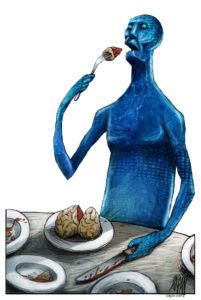
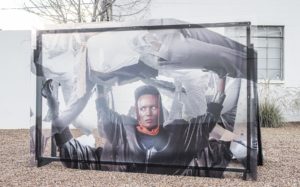
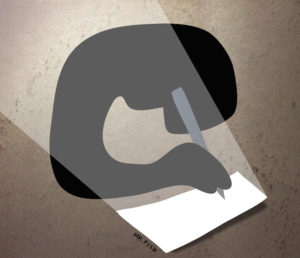
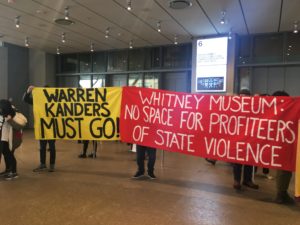
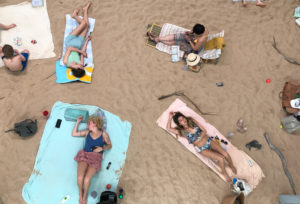
You need to be a supporter to comment.
There are currently no responses to this article.
Be the first to respond.